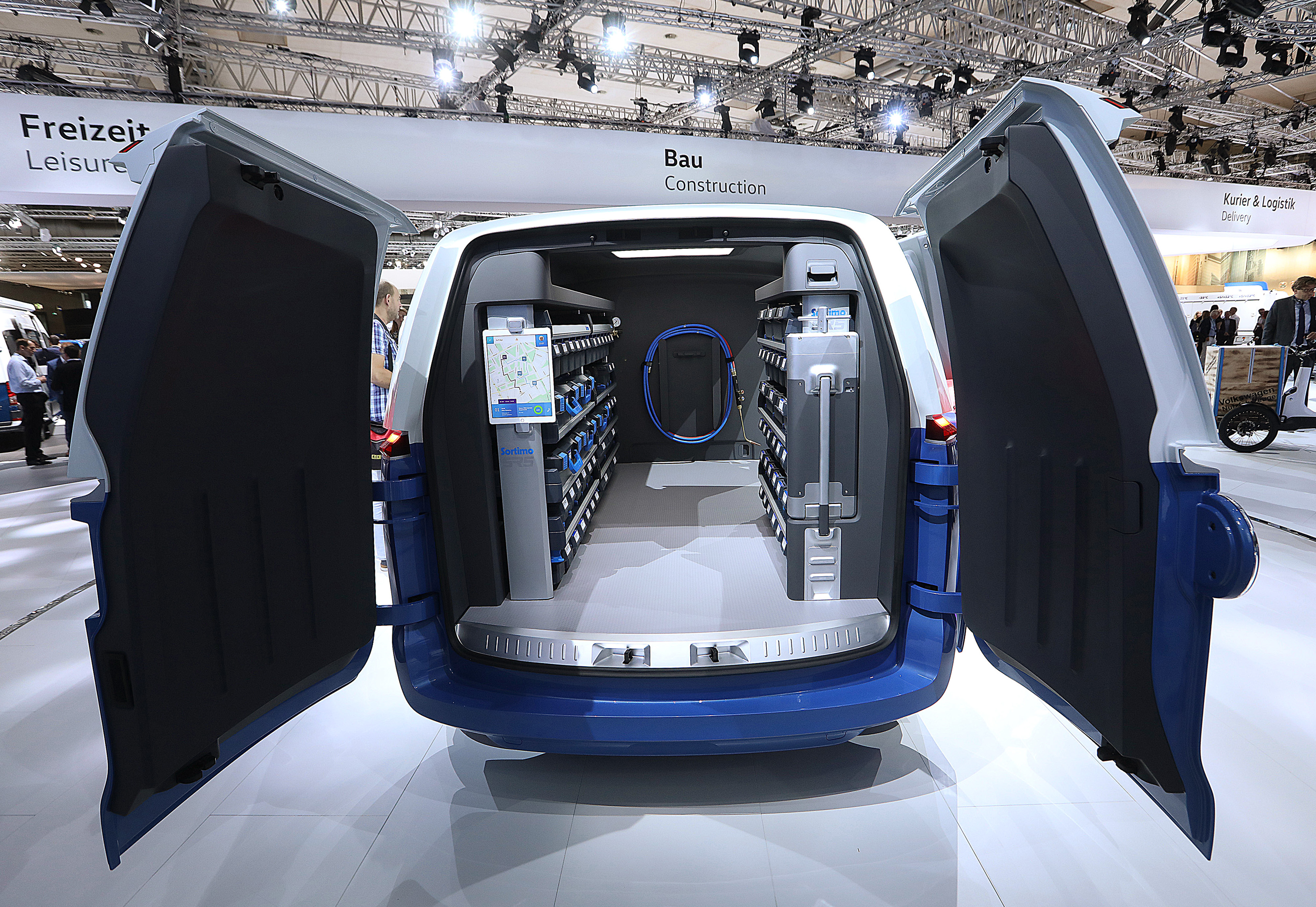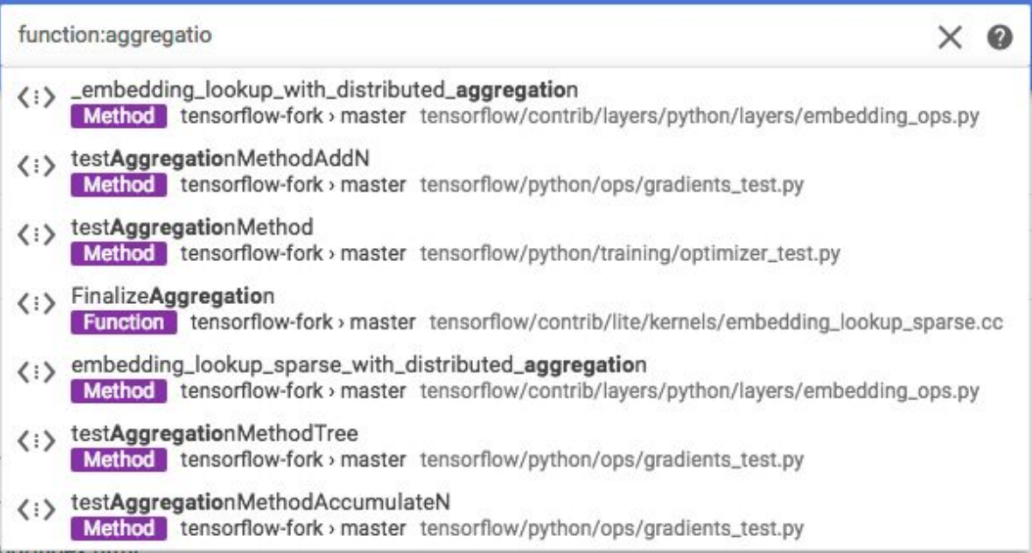Music
Trailers
DailyVideos
India
Pakistan
Afghanistan
Bangladesh
Srilanka
Nepal
Thailand
StockMarket
Business
Technology
Startup
Trending Videos
Coupons
Football
Search
Download App in Playstore
Download App
Best Collections
Technology
This company makes software for people movers, which means it's just the sort of outfit that hires dozens of interns each summer from local colleges for a taste of real-world IT work, reports a pilot fish on the inside.
"We were assigned an intern for our central control group, which designed the systems for monitoring and controlling our automated trains," fish says.
"My manager specifically assigned this young man to work with me."
Trouble is, fish already has his hands full with a project that has a very aggressive timeline to create some very complex software.
- Details
- Category: Technology
Read more: The Intern Experience
Write comment (92 Comments)Meituan-Dianping (3690.HK) enjoyed a strong debut today in Hong Kong, a sign that investors are confident in the Tencent-backed companyprospects despite its cash-burning growth strategy, heavy competition and a sluggish Hong Kong stock market.
During morning trading, Meituanshares reached a high of HKD$73.85 (about $9.41), a 7% increase over its initial public offering price of HKD$69. When Meituan reportedly set a target valuation of $55 billion for its debut, it triggered concerns that the company, which bills itself a &one-stop super app& for everything from food delivery to ticket bookings, as overconfident.
While Meituan, the owner of Mobile, is the leading online marketplace for services in China, it faces formidable competition from AlibabaEle.me and operating on tight margins and heavy losses as it spends money on marketing and user acquisition costs. As it prepared for its IPO, Meituan was also under the shadow of underwhelming Hong Kong debuts by Xiaomi and China Tower. Like Xiaomi, Meituan is listed under a new dual-class share structure designed to attract tech companies by allowing them to give weighted voting rights to founders.
The sponsors of MeituanIPO are Bank of America Merrill Lynch, Goldman Sachs and Morgan Stanley.
- Details
- Category: Technology
Read more: Meituan-Dianping’s IPO off to a good start as shares climb 7% on debut
Write comment (96 Comments)The slow roll towards electrified vehicles isn&t isolated to passenger cars and SUVs. Manufacturers are investing in commercial vehicles as well — everything from school buses and delivery vans to big commercial trucks.
VW Groupvision for an electrified commercial vehicle future also includes a microbus. The automakercommercial vehicles unit unveiled five zero-emission vehicles at the69th IAA Commercial Vehicles show in Hannover, Germany. Among them is an all-electric cargo van thatmeant to be the commercial equivalent of the I.D. Buzz microbus revealed in 2017.
The others include a commercial-grade cargo e-bike, an electric concept van called theCrafter HyMotion thatpowered by hydrogen fuel cell system, a Transporter concept van with a 48-volt mild hybrid drive system that combines a turbodiesel engine with an electric drive and finally, the ABT e-Caddy, a small van that will to arrive on market in mid-2019.

Some of these concepts such as thehydrogen fuel cell Crafter HyMotion are far from hitting the streets. The Crafter HyMotion concept 3.5-ton van is equipped with a hydrogen tank that enable a total range of about 217 miles.
&This is still a concept vehicle, but the technical concept is already near-production,&Heinz-Jürgen Löw, head of sales and a board member of Volkswagen Commercial Vehicles said in a statement. &We are conducting an intensive cost and benefit analysis to determine its market potential. The Crafter HyMotion with a fuel cell drive is absolutely a beneficial addition to our drive portfolio of petrol, diesel, natural gas and electric motors.&
The microbus with its 1970s hippie-turned Jetson-vibe is of course the show stopper, which VW describes at the &ideal vehicle for the urban traffic of tomorrow.& And unlike many other concepts, a version of this one might actually make it into production. The company said itcould be launched into the market as early as2021, a year ahead of the passenger version unveiled last year.
The I.D. Buzz cargo microbus concept is equipped with 20-inch wheels (smaller than the I.D. Buzz passenger van) and a solar roof that can extends the batteryrange another 9 miles a day.
It also wide-opening rear wing doors, a new rear bumper and is equipped witha &connected& system that allows all items on its interior shelves to be tracked. Users can unlock the vehicle from the outside via a sensor that recognizes authorized persons via a digital key which is sent to the van from a smartphone.
The cockpit has all the futuristic leanings you might expect with information like navigation projected in #D via an augmented reality head-up display and a portable tablet where the infotainment and climate control functions are housed. The main controls for driving are located on the steering wheel.
The concept also has autonomous driving capabilities, although itunclear if this technology will make it into a production version.

Krisztian Bocsi/Bloomberg via Getty Images
This isn&t the first microbus concept VW has shown off in recent years.There was the BUDD.e, which was introduced in January 2016 at CES. BUDD.e was intended to show the world that VW was serious about electric vehicles in the wake of the diesel emissions scandal that has led to arrests, jail sentences and fines.
The following year, VW unveiled an electric all-wheel drive microbus called I.D. Buzz, a futuristic take on the family camper van. The I.D. Buzzwill go into production starting in 2022.
While the diesel emissions saga drags on, VW is pushing slowly ahead with its electric vehicle plans. VW Groupboard agreed in June 2016 to transform itscore automotive business to focus more on electric vehicles, autonomous driving technology and launch mobility services such as shuttle on demand and ride hailing.Up to 25% of new vehicles under VW Group — a portfolio that includes Audi and Volkswagen Passenger Cars — will be all-electric under the boardStrategy 2025 plan.
Those electric ambitions (and investments) doesn&t translate into an exodus of diesel — at least on the commercial vehicle front.
Thomas Sedran, board chairman of Volkswagen Commercial Vehicles, said that despite progress made in the electrification of its products, the business unit would continue to rely on highly advanced diesels as the backbone for logistics, particularly vehicles that make long distance runs, in rough terrains and for heavy loads.
- Details
- Category: Technology
Read more: VW reimagines the microbus as an all-electric cargo hauler
Write comment (95 Comments)Livspace, an India-based startup that helps consumers manage home renovations and interior design, has pulled in a $70 million Series C deal thatled byGoldman Sachs and TPG Growth.
Existing investorsJungle Ventures, Bessemer Venture Partners, and Helion Ventures also took part in the round, which takes Livspace total funding to date to over $100 million. The deal follows Goldmaninvolvement in fintech startup Jumorecent $52 million round, while TPG Growth recently hired former Twitter Asia head Shailesh Rao to lead its business in India and Southeast Asia.
Livspacewas founded by former Googler Anuj Srivastava and Ramakant Sharma, who has spent time with Myntra and Jungle Ventures among others, in 2015. The business aims to be a one-stop-shop for home interior design — whether that be renovations or new home design. That makes it an e-commerce business that integrates multiple pieces of the interior ecosystem: consumers, designers and the supply chain.
For that reason, Livspace is an inherently local business. Interior designers need to be local to customers and supply chain partners need to have thecapacity to ship to a location, too, but Livspace actually goes beyond that by mapping buildings in a city to enable virtual mockups and 3D models to be rendered to help show a consumer a compelling preview of what their home could look like. The company also operates brick and mortar ‘Design Centers& where consumers can touch and see materials and furniture, while the centers also operate as a location for designers and consumers to meet up if needed.
The company is currently present in seven cities in India. With this money in the bank, the plan is to expand to reach 13 cities in India by the end of next year but itambitions go beyond its founders& home country.
In an interview with TechCrunch,Srivastava said that he sees an opportunity to grow the business not just in Asia but also western markets where, to date, there are no integrated solutions such as Livspace.
&The industry has suffered from chaos,& he said. &Therelittle to no aggregation on supply and demand, and there is significant opportunity for tech-based platform to unite consumers, agentsand the supply chain market.
&We have focused so far on doing one market really, really, well,& he added. &We wanted to make sure you can knock it out of the park first.&
So far so good. Livspacesays itis on track to reach $100 million in annualized gross revenue by March 2019.Srivastava said it has outfitted 5,000-6,000 houses so far with 1,200-1,500 projects in its system at any one time.
Consumers, of course, shop around for deals and the completion rate of projects is at around one-third,Srivastava said, with an average of about $15,000 per consumer. Of that, the take rate for Livspace is around 40 percent with seven percent for the designer. The company claims to have around 25,000 designers on the platform but less than 10 percent of all applicants are approved to ensure quality and expertise.
Through Livspace,Srivastava claims designers can massively boost their income, typically by around 2X. He argues that is not only because the rates earned are higher, but also because average project time is reduced from multiple-months to just 12-14 weeks. That means designers can also operate more efficiently.
Financially,Srivastava said he believes the business model itself can scale and that there isclear &path to profitability& particularly if the company can expand internationally.
&We started monetizing in India but we have our eyes set on every single other similar market in the planet. We&ll get there in time,& he said.
- Details
- Category: Technology
Read more: India’s Livspace raises $70M for its one-stop-shop for interior design
Write comment (99 Comments)Google today announced an update to Cloud Source Repositories, its recently relaunched Git-based source code repository, that brings a significantly better search experience to the service. This new search feature is based on the same tool that Googleown engineers use day in and day out and itnow available in the beta release of Cloud Source Repositories.
If you&ve been on the internet for a while, then you probably remember Google Code Search. Code Search allowed you to search through any open-source code on the internet. Sadly, Google shut this down back in 2012. This new feature isn&t quite the same, though. It only allows you to search your own code — or that from other people in your company. Itjust as fast as Googleown search, though, and allows you to use regular expressions and other advanced search features.
One nifty feature here is that forJava, JavaScript, Go, C++, Python, TypeScript and Proto files, the tools will also return information on whether the matchis a class, method, enum or field.

Google argues that searching through code locally is not very efficient and means you are often looking at outdated code.
As Google also notes, you can mirror your code from GitHub and Bitbucket with Cloud Source Repositories. I&m not sure a lot of developers will do this only to get the advanced search tools, but itdefinitely a way for Google to get more users onto its platform, which is a bit of an underdog in an ecosystem thatdominated by the likes of GitHub.
&One key benefit is that now all owned repositories that are either mirrored or added to Cloud Source Repositories can be searched in a single query,& Cloud Source Repositories product manager Russell Wolf writes in todayannouncement. &This works whether you have a small weekend project or a code base the size of Google&s. And itfast: You&ll get the answers you need super quickly—much faster than previous functionality—so you can get back to writing code. And indexing is super fast, too, so the time between new code being added and being available means you&re always searching up-to-date code.&
- Details
- Category: Technology
Read more: Google’s GitHub competitor gets better search tools
Write comment (99 Comments)Investment firm SparkLabs has run accelerator programs across APAC, now it has announced its first that&ll be based on U.S. soil and ita cybersecurity and blockchain program that&ll be located in Washington, D.C. from next year.
The program will be led by former Startup Grind COO Brian Park and Mike Bott, who is ex-managing director ofThe Brandery accelerator. Advisors signed on to work with the batch of companies includes top names like Microsoftformer chief software architect Ray Ozzie, Litecoin creator Charlie Lee, LinkedIn co-founder Eric Ly and Rich DeMillo, who was the first CTO of HP.
Named &SparkLabs Cybersecurity + Blockchain,& the program will kick off with an inaugural batch of companies in March next year, with applications opening accepted from January. SparkLabs co-founder and partner Bernard Moon told TechCrunch in an interview that the plan is to run theprogram for four months with two intakes per year.
It&ll use SparkLabs& standard investment approach that sees selected companies offered $50,000 for up to six percent equity. Thatvariable on a case-by-case basis — for example for those that have raised significant early funding at a large valuation — but Moon said that the priority for the security and blockchain program is to seek out companies that are bootstrapped or at least have not raised much.
Moon said that the general focus is not on cryptocurrency but instead enterprise-led technologies. So, on the blockchain side, that might mean protocols and other infrastructure layer plays, although Moon said he does believe that there is scope for more consumer companies, too.
SparkLabs has a dedicated blockchain fund — SparkChain Capital — but neither that fund nor its principal, Stellar founder Joyce Kim, is directly involved in the accelerator. Thatvery deliberate, Moon said, because SparkLabs wants to grow its network in the blockchain space outside of SparkChain, although he did explain that the program will be &a vetted deal source& for the fund, so graduates could potentially look it to when they want follow-on funding.
Outside of SparkChain Capital, SparkLabs is active in crypto, primarily through its presence in Asia — especially Korea where it operates its first accelerator program. The company is even tokenizing two of its accelerators —a six month IOT-focused initiative in Korean smart city Songdo and Cultiv8, an accelerator for agriculture and food tech in Australia — although Moon said that the project has been delayed but remains on track to happen soon. Investment-wise, it has backed over 10 blockchain companies and a dozen in the cybersecurity space.
The cybersecurity and blockchain program has an interesting story. Park and Bott originally spun out AOL Fishbowl Labs accelerator program but after a discussion with Moon for advice, the pair ended up signing up with SparkLabs. Thata move that Moon believes will help bring a global perspective through SparkLabs& presence in the rest of the world — it has six other programs globally — and marrying that with whathappening in the U.S.
&We want to foster and grow a robustecosystem in both cybersecurity and distributed ledger technologies. We believe these twoverticals are synergetic by nature, but we will seek innovations beyond the overlap,& Park said in a statement
&Itso early within this space that we are only seeing theFriendsters and MySpaces of the blockchain world. The next Facebooks and Twitters will bedeveloped over the next several years,& he added.
- Details
- Category: Technology
Read more: SparkLabs is launching a cybersecurity and blockchain accelerator program in the US
Write comment (100 Comments)Page 4130 of 5614

 12
12





